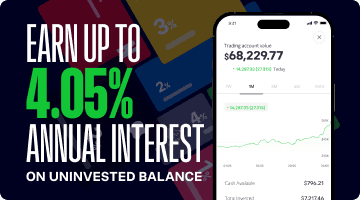The ASX 200 lifted 0.2% last week, with gold miners leading the index while lithium miners fell as lithium carbonate prices continued to fall. Wall Street closed out a topsy-turvy week on Friday with losses of nearly 3%, driven by U.S. President Donald Trump’s policy decisions.
Bitcoin also grabbed headlines last week. The world’s largest cryptocurrency hit a new record high after riding a wave of momentum from positive regulatory developments in the U.S. It topped $111K and looks set for more upside.
It’s a big week ahead, so here are three things to watch:
Nvidia Earnings
Nvidia is the last Magnificent Seven stock to report on the earnings calendar this quarter, but is arguably the most anticipated. In its Q4 earnings call earlier in the year, CEO Jensen Huang said demand for Blackwell Chips had been amazing and that they were seeing billions of dollars worth of sales in the first quarter. So, will that translate this week?
Since that call, Trump’s tariffs have roiled markets, and we’re still unsure how the 90-day tariff pause will play out. Therefore, commentary around tariffs will be a focal point. We know that Nvidia has been hit with a USD$5.5 billion charge for exporting chips to China, which will show up in its results, but given this is something we already know, it’s unlikely to move the dial too much for investors. Investors will want to hear how they’re looking to navigate exports to China with potentially new chip variants that could offset some sales in the second half of the year.
Concerns remain over the potential downturn in demand for chipmakers from tariff-related drama. Still, given the demand from hyperscalers, this is unlikely to fall too heavily on Nvidia’s shoulders. Blackwell chips are in full production, and from what we’ve seen from Big Tech already this quarter, they are allocating billions more dollars to AI, showing demand is likely to be high for Nvidia. The costs from getting the new Blackwell chips off the ground did dent margins last quarter, and that could be prominent again this quarter. But commentary around improving margins into the second half of the year, especially with pricing power to pass on costs, should be a positive for investors.
With demand soaring, Nvidia looks set to deliver another solid quarter, and I’d expect to see strong guidance. We’ve come to expect nothing less from the most important stock on the planet in recent years, but Nvidia is likely to show us why it’s the best in the business.
AU CPI & Retail Sales
Two big economic indicators set to affect the RBA’s next rate call come out this week, with Australia’s monthly CPI figure for April releasing on Wednesday, and April’s retail trade figures following on Friday. Last week’s rate cut, in which the cash rate decreased to 3.85%, was driven by quarterly CPI data showing headline inflation steady at 2.4%, the lowest rate since early 2021.
Trimmed mean inflation also dropped from 3.3% to 2.9%, falling within the RBA’s target range of 2-3% for the first time in over three years.
Australia’s monthly CPI indicator has remained stable at 2.4% for the past two months, and we’re likely to see the CPI for April remain stable or even slow down to 2.3% (which is the consensus estimate), despite Trump’s ‘Liberation Day’ tariffs temporarily reigniting inflation concerns. If April’s CPI does come in at 2.3%, it’s a sign that disinflation is once again resuming after a stable few months and that Trump’s tariffs have had minimal impact on local consumers.
The RBA remains cautious about inflation and is not jumping the gun when it comes to potentially cutting rates again in June, with governor Michele Bullock confirming she “did not know at this point” whether we’re headed into a long series of interest rate cuts. However, a CPI slowdown would certainly help make that decision easier.
Earlier this month, the retail trade figures for March were also released, showing a month-on-month increase of 0.3%, up from 0.2% in February. However, these figures are still falling short of forecasts, which may give the RBA another reason to continue cutting interest rates if April’s data comes in lower than the estimated 0.3%. Despite previous data coming in below estimates, there is optimism that Australians may loosen their wallets in the coming months due to May’s rate cut and Trump’s trade deals.
US PCE Inflation
Across the pond next week, we also get an important inflation reading with the Fed’s preferred measure of inflation, PCE. The big focus will, of course, be the tariff pass-through. We saw early signs of this in April’s CPI and PPI data, which could give us an early sign that this week’s PCE data will show a lift in goods prices.
Although we may see increases in tariff-exposed goods, this should be offset by a continued slowdown in services inflation. Expectations are for PCE inflation at 2.1% with core inflation at 2.5%. With that being said, market pricing has seen the next rate cut in September, with a 65% chance rates will fall. That is essentially pricing in enough time for Jerome Powell to gauge the impact of tariffs. He will want to see a continued softening in PCE data throughout the months ahead to be convinced that tariffs aren’t having an inflationary effect.
*All data accurate as of 26/05/2025. Data Source: Bloomberg and eToro
Disclaimer:
This communication is general information and education purposes only and should not be taken as financial product advice, a personal recommendation, or an offer of, or solicitation to buy or sell, any financial product. It has been prepared without taking your objectives, financial situation or needs into account. Any references to past performance and future indications are not, and should not be taken as, a reliable indicator of future results. eToro makes no representation and assumes no liability as to the accuracy or completeness of the content of this publication.






